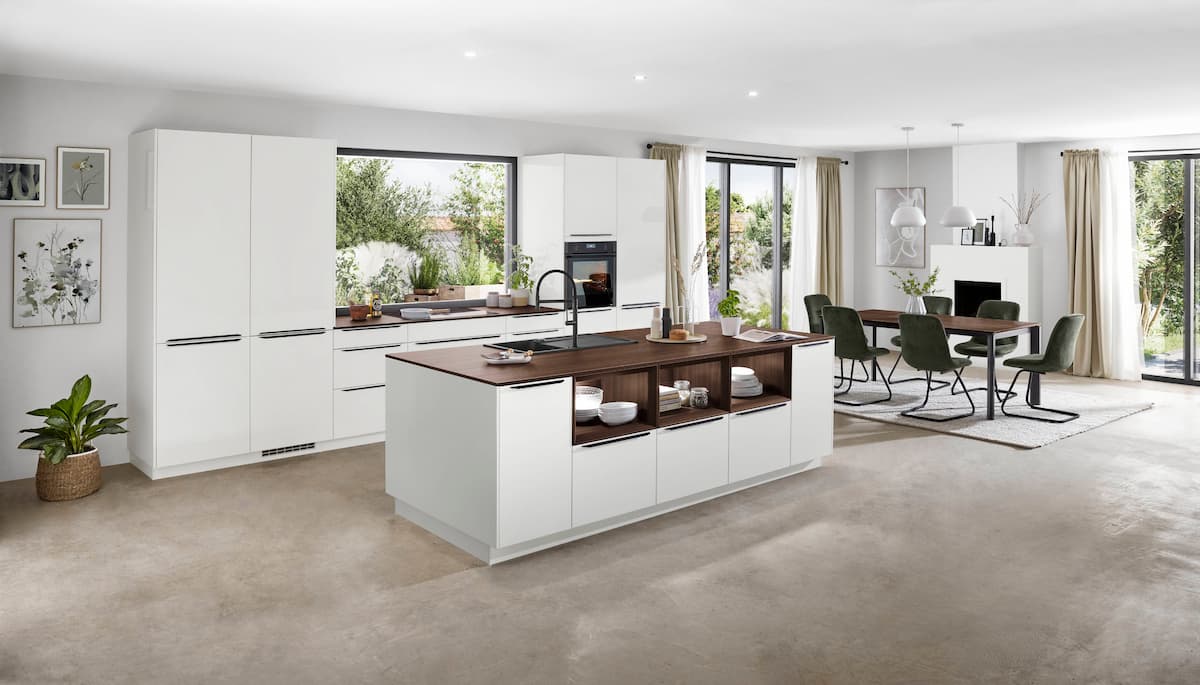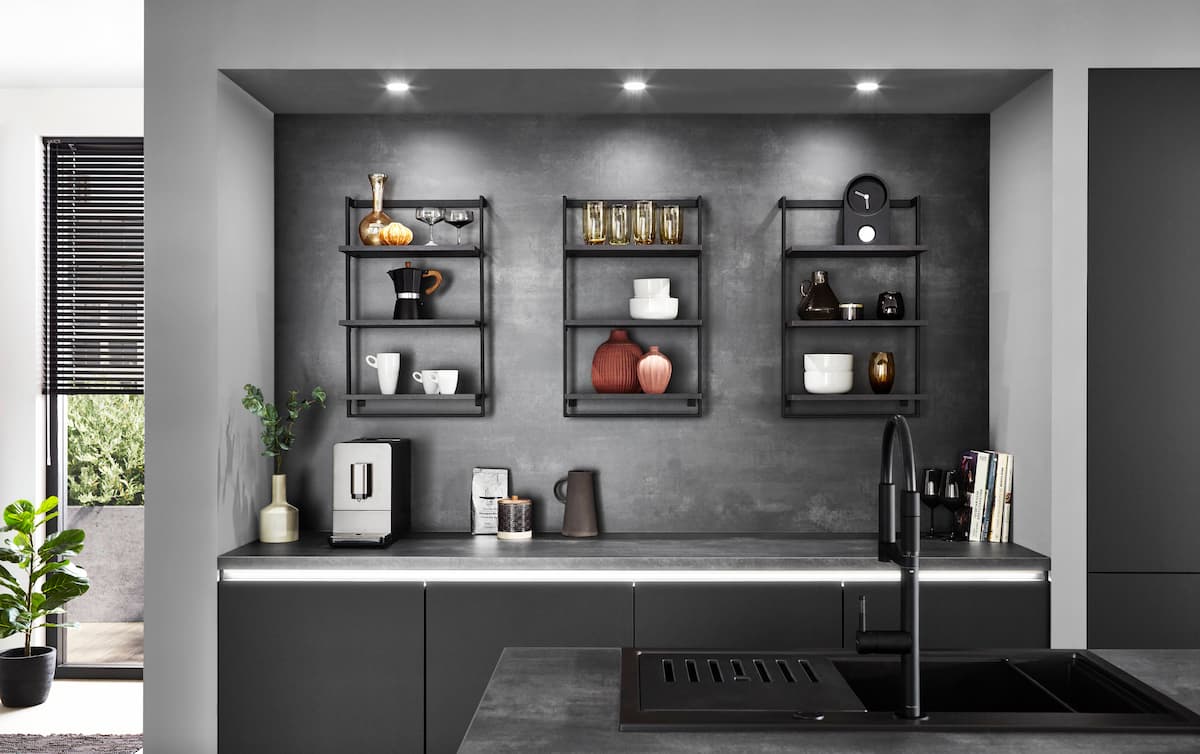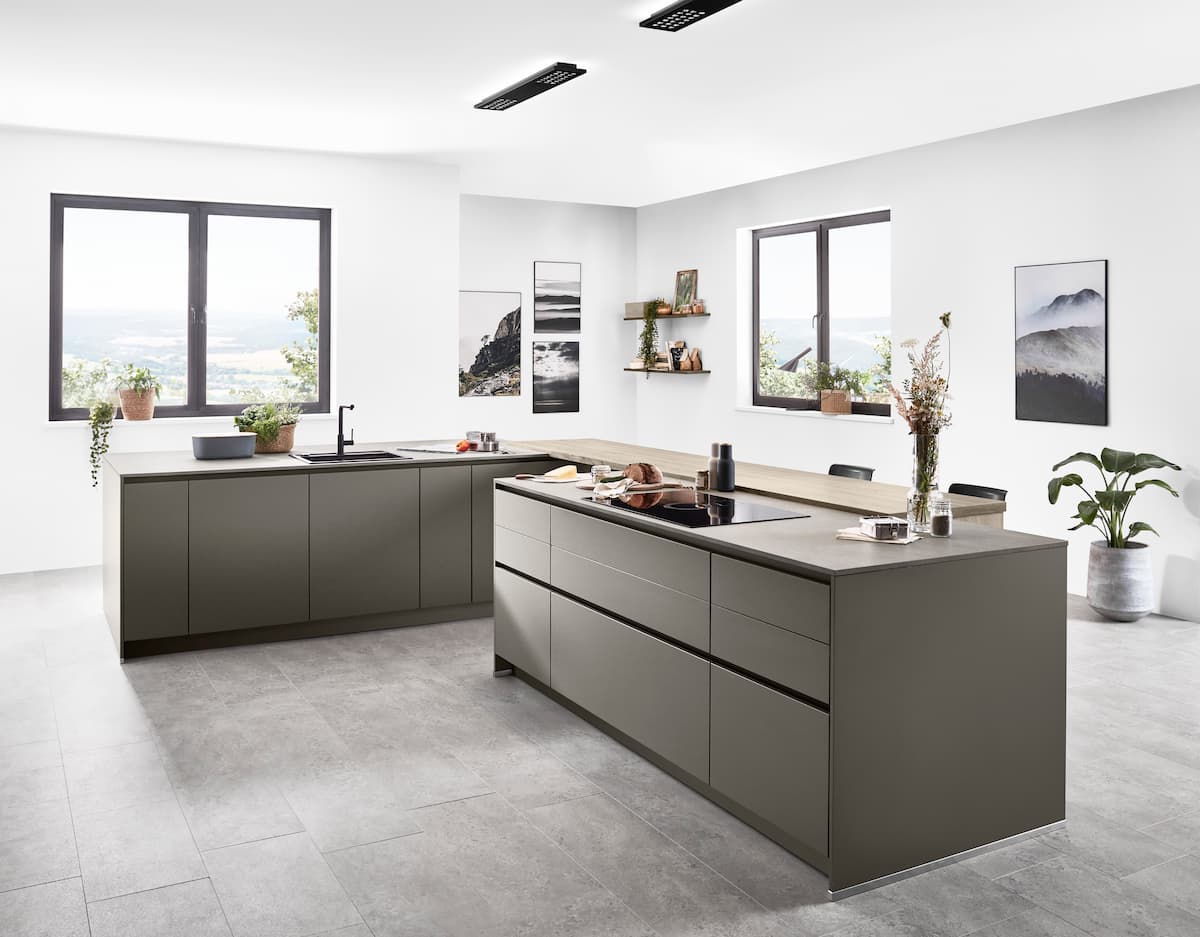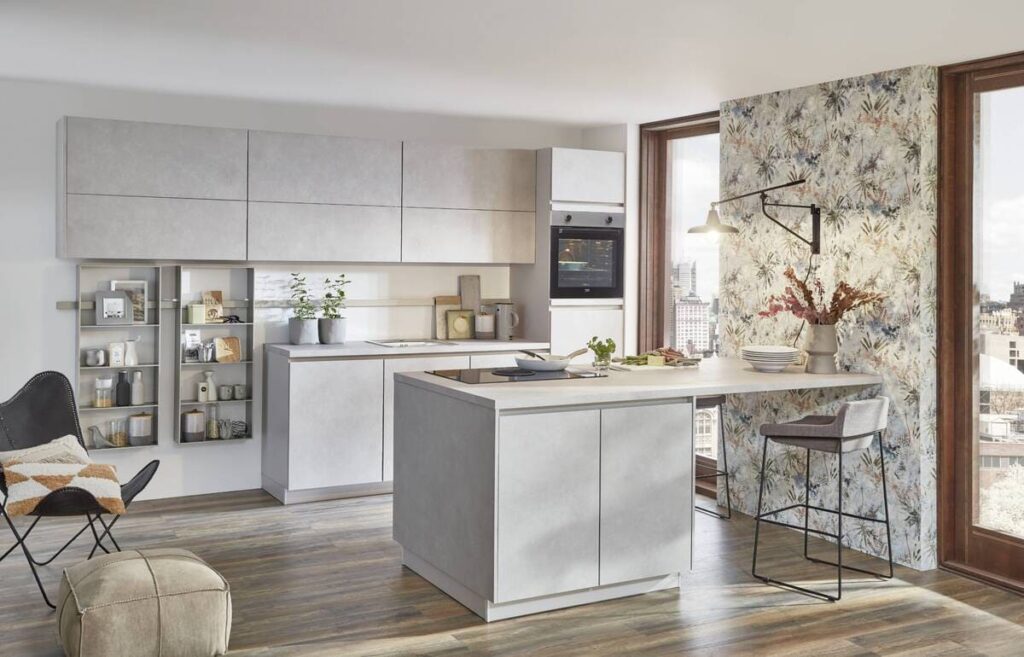
Everyone deserves a kitchen that perfectly reflects your style and makes cooking a joy. Every appliance and cabinet should be exactly where you need it, movements should flow smoothly, and the space ultimately is both functional and inviting.
This dream kitchen can become a reality with a well-designed plan – one that begins with a blueprint.
It takes your ideas and translates them into a functional layout that considers everything from appliance placement to traffic flow. By taking the time to learn how to draw a kitchen plan, you can avoid costly mistakes and ensure your kitchen becomes the heart of your home, perfectly suited to your cooking style and aesthetic preferences.
Before You Sketch: Inspiration and Information Gathering
While diving right into measurements and layouts is tempting, taking a moment to gather inspiration and information can significantly enhance your final kitchen plan. This initial phase is about defining your vision and ensuring the functionality aligns with your lifestyle. We recommend you take a look at some of today’s trendiest eco-friendly design trends, which boast a multitude of benefits!
Finding Your Dream Kitchen Style
When it comes to finding the kitchen style for you, there are countless resources available to spark your creativity. Here are a few ways to get inspired:
Vision Boards
Cut out pictures from magazines or collect images online that showcase kitchens you love. This helps identify design elements that resonate with you, like color palettes, cabinet styles, or backsplash materials. There are even digital vision board tools you can explore!
Browse Online Resources
Websites like German Kitchen Design even provide one-stop services, offering to design a kitchen that is tailored to your exact needs and specifications. Other websites are great resources for the various types of products that you’ll need to design your space with, which will usually let you filter by style, color, or material to find examples that resonate with you.
Consider Your Lifestyle
Think about how you typically use your kitchen. Are you a gourmet cook who needs ample prep space? Or do you prioritize quick meals and need efficient storage solutions? Understanding your cooking habits will guide the functionalities you prioritize in your plan.
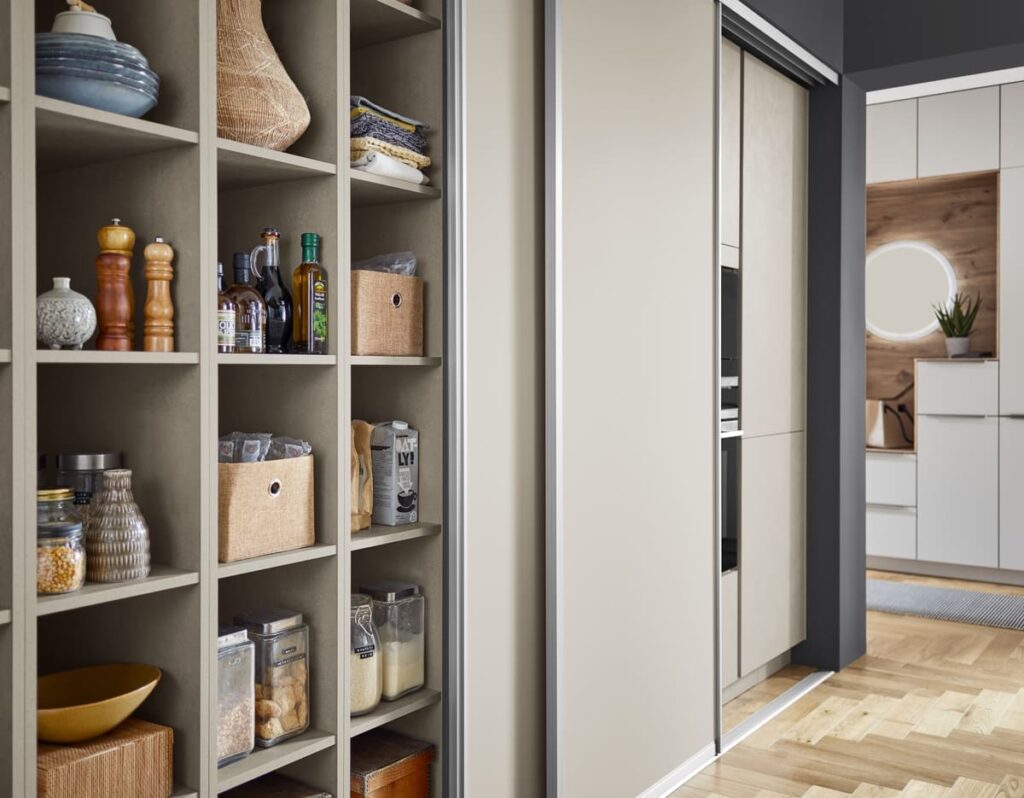
Remember, this step is optional, but it can be incredibly helpful in making informed decisions later in the planning process.
Step-by-Step Guide to Drawing Your Kitchen Plan
Now that you’ve (potentially) gathered inspiration and considered your needs, let’s get down to the nuts and bolts of how to draw a kitchen plan! This step-by-step guide will equip you with the tools to translate your vision into a functional layout.
Precision is Key
Before sketching anything, grab a measuring tape and become a master of your kitchen’s dimensions. Accurate measurements are crucial for ensuring appliances and cabinets fit seamlessly into your plan. Here’s what you need to measure:
Walls
Measure the length of each wall, noting any doorways or windows that will impact your layout.
Doors and Windows
Record the width and height of all doors and windows, including any hinges or handles that might affect cabinet placement.
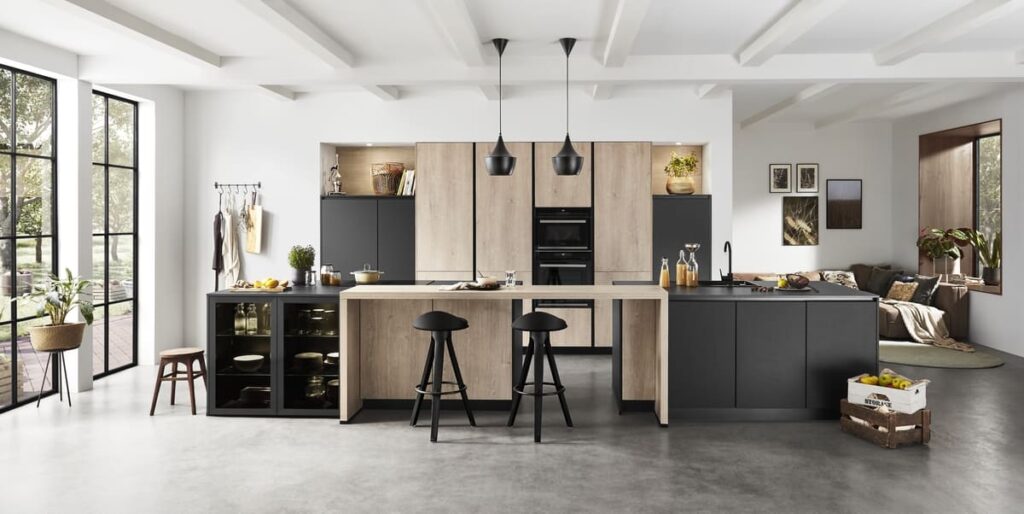
Appliances
Don’t forget to measure your existing appliances (or standard appliance sizes if you’re buying new) to ensure they fit comfortably in your designated spots.
As a general practice, It’s helpful to sketch a rough outline of your kitchen on a separate piece of paper while taking measurements. This will help you visualize the space as you record dimensions.
The Work Triangle Reigns Supreme
Kitchen layouts come in various shapes and sizes, each with its own advantages. A key factor to consider is the “work triangle” – the imaginary path you create when moving between the sink, stove, and refrigerator. An efficient work triangle minimizes wasted steps and ensures a smooth workflow.
However, there are multiple ways to do this. Kitchen layouts come in a variety of general layouts (galley, L-shaped, U-shaped, etc.), each with pros and cons in relation to the work triangle. Let’s dive into how they differ, and discover which layouts might best suit your needs.
Galley Kitchen
A long and narrow layout with countertops and cabinets lining two parallel walls, often seen in apartments or small homes.
- Pros: Maximizes counter and storage space in a compact footprint. Efficient work triangle due to close proximity of appliances.
- Cons: Can feel cramped, especially for multiple cooks. Limited prep space due to facing counters.
L-Shaped Kitchen
Versatile layout with countertops and cabinets following two adjoining walls that create an L-shape.
- Pros: Offers good counter and storage space with a well-defined work triangle. Works well in various kitchen shapes and can accommodate a small breakfast bar or additional prep space in the corner.
- Cons: May not be ideal for open floor plans as it can feel closed off. Depending on the size of the L, traffic flow might be hindered if the corner creates a tight bottleneck.
U-Shaped Kitchen
A horseshoe-shaped layout with countertops and cabinets lining three walls.
- Pros: Maximizes storage and counter space, perfect for serious cooks who need ample workspace. Creates a very efficient work triangle with everything close at hand.
- Cons: May not be suitable for open floor plans as it can feel closed in. Requires a larger kitchen footprint to avoid feeling congested. Traffic flow might be an issue in smaller U-shaped kitchens.
Island Kitchen
A layout featuring a central island that provides additional workspace, storage, and seating. Can be incorporated into other layouts like L-shaped or U-shaped kitchens.
- Pros: Offers extra prep space, storage, and can be a social hub for entertaining or interacting with family while cooking.
- Cons: Requires ample floor space to avoid feeling cramped, especially when incorporating seating. Needs careful planning to ensure the island doesn’t obstruct traffic flow.
Sketching Your Kitchen Plan
With your measurements and chosen layout in mind, it’s time to grab a pencil and actually get into how to draw a kitchen plan, and bring your dream kitchen to life on paper! Here’s what you’ll need:
Graph Paper or Drawing Template
Using graph paper allows for easy scaling and ensures everything is properly proportioned. Alternatively, you can create a scaled template based on your actual kitchen measurements.
Ruler and Pencil
A ruler helps draw straight lines for walls and cabinets, while a pencil allows for easy revisions as you refine your plan.
Now, let’s get sketching! Here’s what to include in your initial draft:
- Walls: Draw the perimeter of your kitchen based on your measurements, including any windows and doors.
- Appliances: Using appropriate symbols or notations, mark the locations of your refrigerator, stove, sink, and any other major appliances.
- Cabinets: Sketch in the general placement of cabinets along the walls, considering base cabinets, upper cabinets, and any corner units.
Be sure to use different symbols or notations for appliances, fixtures, and cabinet locations to easily differentiate them in your sketch. This will make it clear what each element represents in your plan.
Refining and Optimizing for Functionality
Your initial sketch is a starting point, and now comes the fun part – refining it to create an optimal layout! Here’s what to consider:
Work Triangle Efficiency
Ensure the placement of your sink, stove, and refrigerator minimizes travel distance and creates a smooth workflow.
Appliance Placement
Consider factors like ventilation for the stove and easy access to plumbing for the sink when finalizing their positions.
Task Zones
Think about designated areas for specific tasks, like a prep zone near the sink or a baking zone with easy access to the oven.
Traffic Flow
Imagine yourself moving around the kitchen – is there enough space to open cabinet doors and drawers comfortably? Can multiple people move around without feeling cramped?

Don’t be afraid to experiment! Revise your sketch as needed to achieve a layout that maximizes functionality and caters to your specific needs. With a bit of practice, you’ll be well on your way to creating a kitchen plan that’s both stylish and efficient, paving the way for your dream kitchen to become a reality.
Advanced Tips for a Functional and Stylish Kitchen Plan
While a well-defined layout is crucial, a truly exceptional kitchen plan incorporates elements that enhance both functionality and style. Here are some additional tips to consider when honing how to draw a kitchen plan:
Storage Solutions
Maximize your storage space with clever solutions like pull-out drawers, corner cabinets with rotating shelves, and hidden compartments in pantries. This not only keeps your kitchen organized but also improves accessibility.
Play With Lighting
A well-lit kitchen is essential for safety and functionality. Consider incorporating a combination of task lighting under cabinets for food prep and general ambient lighting for the overall space.
Style Throughout
Your kitchen plan should reflect your design preferences. Choose cabinet styles, hardware finishes, and backsplash materials that complement your overall vision.
Don’t Forget the Details
Think about incorporating small details that elevate your kitchen’s functionality and style. This could include pot racks for easy access, a built-in spice rack near the stove, or a designated spot for small appliances to minimize clutter on countertops.
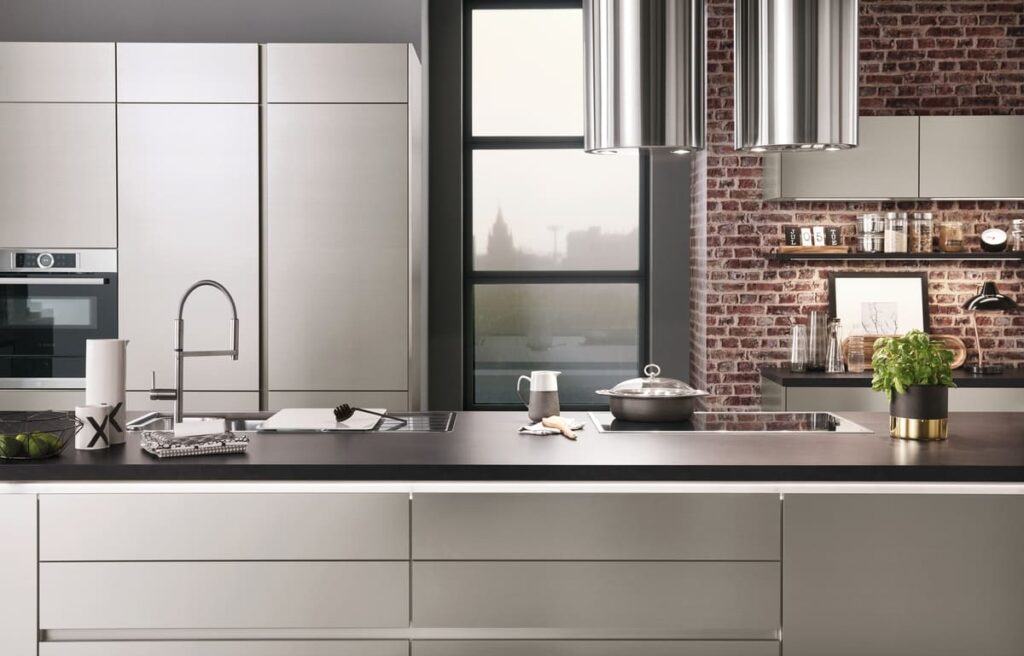
Remember, your kitchen plan is a roadmap to your dream kitchen – make it your own!
Turning Your Dream Kitchen into Reality
Congratulations – you’ve now learned the key steps to drawing a well-designed kitchen plan. By following this guide, you’ve taken a significant step towards creating your dream kitchen – one that not only enhances functionality but also becomes the heart of your home, a place where you can create delicious meals and share memorable moments with loved ones.
Feeling overwhelmed or maybe just need an additional bit of inspiration? Contact German Kitchen Design’s team of experts today, who will happily guide you through every step of the process, from creating tailored blueprints and layouts to considering all the additional details that make a kitchen truly functional.
German Kitchen Design specializes in crafting kitchens that are both beautiful and built to last, boasting modern designs and impeccable German engineering. If you’re worried, however, that your dream kitchen won’t be in your hands anymore, don’t; they focus on providing a tailored service to ensure your dream becomes a reality, so you can be sure that your every need and whim are catered to.
Get started on your dream kitchen today!

